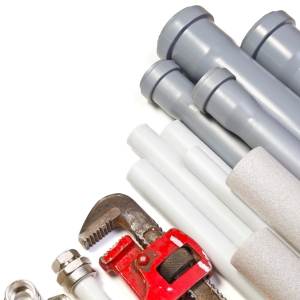
Most homeowners don’t think about the condition of the external buried water and sewer lines that run from the public utility connection to the exterior of their homes – out of sight, out of mind. In fact, people don’t think about their service lines until confronted with a backed up sewer or leaking water line when challenged to find a reputable plumber and pay for the repair that can cost thousands of dollars. Protecting home and property, usually the single largest investment an individual will make in their lifetime according to Freddie Mac, is a top priority for many homeowners.
- The American Society of Civil Engineers (ASCE) recently gave a D (D = Poor) rating to America’s water and wastewater public infrastructure. Additionally, about 30% of Canadian municipal infrastructure is assessed between fair and poor. Homeowners’ water and sewer lines are subjected to the same conditions as the lines that make up the public infrastructure – age, root invasion, ground shifting, fluctuating temperatures and more. While government is addressing the public infrastructure, homeowners are responsible for the cost of repairs to the service lines located on their property. These repairs can cost from hundreds of dollars to upwards of $1,500 per repair, which can be hard on a family’s budget. With a warranty, the homeowner is covered for the repair costs due to normal wear and tear, with no service fees or deductibles.
- Several studies indicate that many people are not prepared for these kind of unexpected expenses, even though most have a budget. A recent study by the Federal Reserve suggested that more than 50% of individuals surveyed could not afford a hypothetical emergency expense of $400 without selling belongings or borrowing money. Homeowners work hard for their money and it’s no secret that the expense of owning a home adds up over time. Bankrate’s study revealed that while more than 80% of American’s have a prepared household budget, more than 3 in 5 would have to look elsewhere, such as borrowing from family or using a credit card, in order to cover a small emergency expense, not having enough savings to cover the cost. With depleted savings and many of those eligible for retirement unprepared, expensive repairs are just not in the budget.When evaluating monthly expenses, such as a water or sewer line warranty program, homeowners are encouraged to consider what they have in savings and what they can honestly spend each month for protection. For homeowners with limited resources, a few dollars a month to provide peace of mind could outweigh the risk of “if” a failure would ever occur, considering only 38% said they had sufficient savings to cover an emergency expense.
- It can be difficult to find a contractor you can trust to do the job right the first time.
Lifehacker.com suggests, “You can’t cut corners here – there are plenty of bad handymen out there willing to do shoddy work and charge you a ton of money, and they give the good ones who are eager for your business a bad name.” With a service line warranty, the vettinghas been done, so you know that the contractor sent to make the repair has proper licenses and insurance andis located within the area.The Western Pennsylvania chapter of the BBB comments on the challenge of locating the right contractor. “Hiring a home improvement contractor toperform work or repairs can certainly be an overwhelming process during anunexpected emergency. It’s also the type of situation that likely has an impact on people’s budgets, which is why it’s important for consumersto be educated on their rights and responsibilities when choosing a contractor.”Our program only uses contractors that have successfully passed a rigorous background check, maintain proper licensing and insurance, and as the program’s representative, are committed to providing exceptional customer service.
- Homeowners with a service line warranty are more likely to report a problem and have it fixed quickly, which helps with water conservation efforts and prevents ground pollution. We know the impacts that water main breaks have on water waste: a campaign launched by the National Association of Water Companies and the U.S. Chamber of Commerce reports that there are 650 water main breaks per day in the U.S., resulting in a daily loss of 7 billion gallons of water. The same failing pipes wreaking havoc with municipal water systems are carrying water to your resident’s homes, and are subject to the same breaks and leaks.
